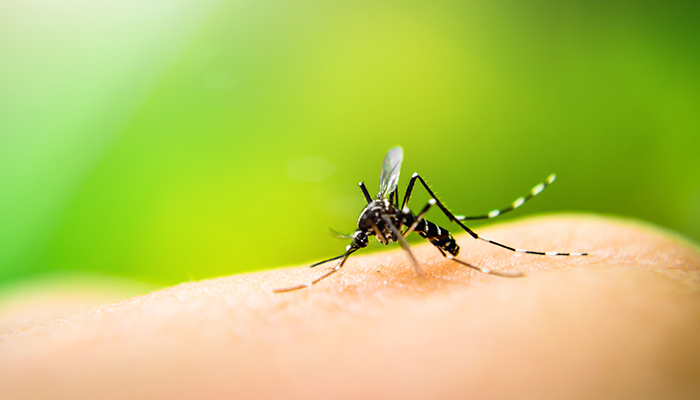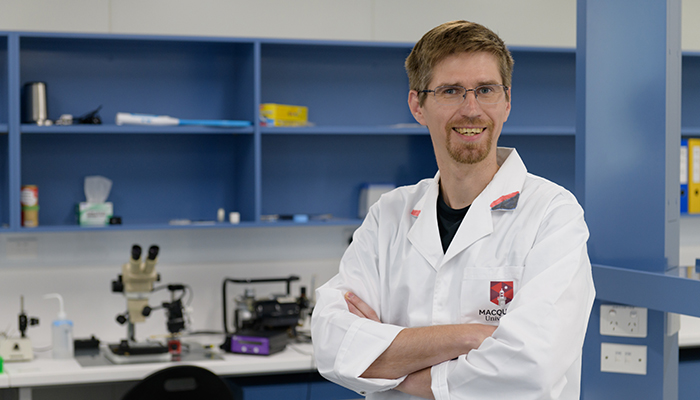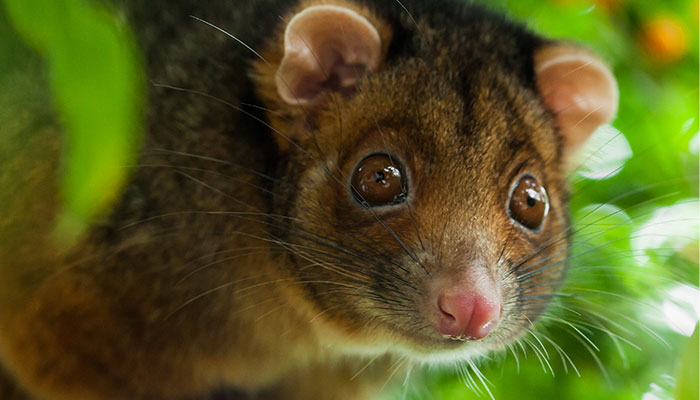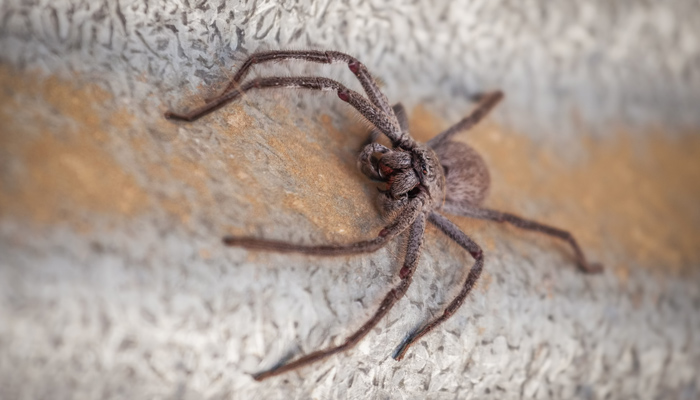Mosquito-borne illnesses have caused roughly half of all human deaths across history – and now a Macquarie University synthetic biologist is heading a revolutionary breeding program to eradicate a prime culprit.

Combat station: Dr Maciej Maselko at work in the Macquarie University lab on his mosquito-breeding program.
Dr Maciej Maselko, a CSIRO Synthetic Biology Future Science Fellow in Macquarie’s Department of Biology, has developed a technique called Synthetic Genetic Incompatibility, which effectively creates ‘synthetic species’.
The aim is to make an engineered mosquito that’s immune to the problem diseases, to mate with wild partners and produce offspring that are either sterile or genetically programmed to die.
The Aedes aegypti mosquito is the species that is mainly responsible for transmitting viruses such as zika, dengue, chikungunya and yellow fever. It specialises in feeding on humans, is extremely hardy, and a very effective invasive species that has spread throughout the world from its original home in sub-Saharan Africa.
The synthetic biology revolution is providing us with new tools to combat mosquitoes which are effective and highly targeted.
Efforts to eradicate the mosquito with chemicals and specialist environmental strategies have failed so far, meaning global cases are on the rise. About 40 per cent of the world’s population is at risk, including here in Australia.
The female is the one that bites.
“The Aedes aegypti mosquito poses a major and expanding threat to human health,” Maselko says. “Dengue's spread has been pretty remarkable with an over 30-fold increase in the last 50 years.
"We are using advanced synthetic biology tools to develop new technologies to combat these mosquitoes which will be effective, scalable, and species specific.”
Gene mutation targets offpsring
The synthetic species created using Maselko’s technique have an induced mutation in a specific area of the genes that control embryonic development or the cell cycle. The area involved controls gene copying. The technique works by using proteins designed to home in on specific DNA sequences and turn on adjacent genes.

Lethal dose: Mosquitoes pose a major and expanding threat to human health.
Once mating has taken place, the designed protein would then activate in the offspring, making a target gene ‘overexpress’ (for example, grow uncontrollably). Depending on the gene, this would either kill the offspring or render them sterile.
After successive releases of engineered mosquitoes, the population would be eradicated.
This technique is intended to be used at first on mosquitoes invading a new area, where there are relatively few target mosquitoes. Lack of competition gives the engineered species a greater chance of mating with the wild type. Although Aedes aegypti will travel to mate, they don’t unless they have to. And they generally only mate once in their lives.
The one available vaccine can only be used on people who have already had one of the four strains of dengue.
A mosquito generation is about two and a half weeks, meaning that a rapid response to new infestations could mean they are eradicated quickly in that area.
Other releases could be used to drive established colonies back. The technology is designed to work on either.
“The synthetic biology revolution is providing us with new tools to combat mosquitoes which are effective and highly targeted,” Maselko says. “Humanity has always struggled with mosquito-borne illnesses which are estimated to have caused roughly half of all deaths in human history.”
Dengue cases on the rise in Australia
In Australia, 59 cases of Zika virus were confirmed last year and dengue cases reached a 20-year high in 2017 at 2129 infections, with the most cases recorded in Western Australia (553). There is an outbreak in Rockhampton, where dengue hadn’t been seen for decades. The one available vaccine can only be used on people who have already had one of the four strains of dengue. It’s the second dose of dengue that’s more likely to kill you.

Global issue: Dr Maciej Maselko says there has been at least a 30-fold increase in dengue fever in the past 50 years.
It’s possible to control some insect species by sterilising males with gamma radiation and releasing them to mate with females, reducing the birth rate. Unfortunately, in Aedes aegypti the dose needed for sterilisation produces short-lived males who are too sickly to compete for females.
The hardiness that helped Aedes aegypti spread so successfully could be used against them. They are difficult to eradicate because they take advantage of tiny nooks and crannies to breed, and their eggs can stay viable for months without water.
But that means the eggs of the synthetic species can be harvested at a central location, then delivered to an outbreak spot. Just add water and they’ll hatch.
Because Aedes aegypti is an invasive species that doesn’t have a vital ecological role, it won’t be missed. But it’s possible that there could be a disease-carrying species that does have an important ecological role to play. In this case a similar technique could be used to engineer a species that is immune to the disease, to gradually supplant the problem population.



